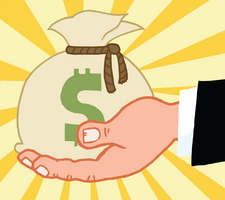 The process of buying a house or a condominium is different than buying just about anything else. It’s possible to save up and pay cash for new home appliances, a new car or just about anything else, but it’s usually not possible to buy a home with cash. Instead, home buyers generally need to take out a mortgage.
The process of buying a house or a condominium is different than buying just about anything else. It’s possible to save up and pay cash for new home appliances, a new car or just about anything else, but it’s usually not possible to buy a home with cash. Instead, home buyers generally need to take out a mortgage.
Unfortunately, the process by which a home mortgage gets paid down may not be entirely clear to first-time buyers (or even to those who have purchased a home before). While there are a variety of home mortgage types, a common element of most mortgages is the idea of “amortization.” Amortization is the process of determining how a loan gets paid down over time.
Here’s information and advice to consider about how mortgage amortization works.
The Pay Down is Not Linear. Determining the amortization schedule of a home mortgage loan is not simply a matter of dividing the amount of the loan by the number of payments and applying the interest rate to each amount. Instead, there is a complicated mathematical formula that’s used to determine how much of each of your payments goes to service your interest burden, and how much will be used to pay down your principal. (A portion of each payment will also be allocated to an escrow account for purposes of paying property taxes and homeowner’s insurance.)
Front-Loaded Interest. A consequence of amortization is that the portion of each repayment amount that’s allocated to interest is much greater at the beginning of the repayment schedule. For example, the first few years’ worth of payments in a 30 year mortgage will go primarily toward interest, rather than repaying the principal amount. As the mortgage matures, an increasing amount of each payment will go towards repaying the loan principal.
Knowing Your Mortgage. Because of the principle of amortization, it’s important to fully understand the nature of any home mortgage loan you are considering. For example, there are some short term mortgages and “balloon” mortgage products that involve a significant payment at the end of the term. (Keep in mind that the expectation is not that the borrower will actually pay off the entire remaining balance at that time, but will instead either refinance their home or sell it.) With these types of mortgages, nearly all of the payments that the borrower makes are allocated to interest. This means that at the end of the mortgage term, the principal balance will have declined very little. (Though they’ve fallen out of favor, just a few years ago there were actually some “negative amortization” products where the principal balance would actually increase by the end of the mortgage term.)
If you’re currently paying down a mortgage, you can check your most recent statement (often a quarterly statement) to see how each of your payments is allocated between interest and principal. If you’re shopping for a mortgage, you can use an online amortization calculator to get a better sense of how your payments will be applied.
 The process of buying a house or a condominium is different than buying just about anything else. It’s possible to save up and pay cash for new home appliances, a new car or just about anything else, but it’s usually not possible to buy a home with cash. Instead, home buyers generally need to take out a mortgage.
The process of buying a house or a condominium is different than buying just about anything else. It’s possible to save up and pay cash for new home appliances, a new car or just about anything else, but it’s usually not possible to buy a home with cash. Instead, home buyers generally need to take out a mortgage.

